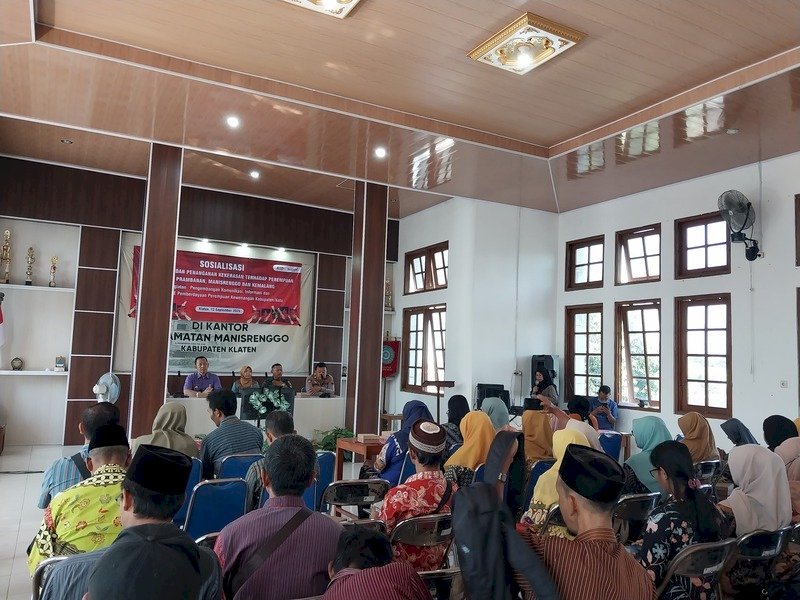
NGOCSTIP – Rising gender violence in Jombang has become a concerning issue in recent years. The number of cases continues to increase year by year, with women bearing the brunt of this violence. In 2024 alone, WCC Jombang recorded 112 cases of violence against women. Among these cases, the majority are related to domestic violence, sexual violence, and human trafficking. The surge in these cases highlights the alarming nature of gender violence in the region.
The figures for gender-based violence in Jombang have been rising steadily. In 2023, there were 34 reported cases of domestic violence (KDRT). In 2024, that number jumped to 50 cases. The number of sexual violence cases also increased from 47 cases in 2023 to 55 in 2024. This upward trend is deeply troubling and reflects an escalating problem in the area.
Ana Abdillah, Director of WCC Jombang, explained that the types of violence are varied. They range from domestic violence (KDRT), sexual violence, general criminal offenses, to human trafficking. The violence often targets women, with a wide range of perpetrators, including husbands, family members, neighbors, and even people in positions of authority.
“Read about: Polri Breaks Down International Human Trafficking Network Targeting Bahrain”
The violence affecting women in Jombang comes in many forms. It includes physical and psychological violence, sexual harassment, rape, and even human trafficking. Sexual violence, in particular, has seen a sharp increase, with more and more women becoming victims. Additionally, there are cases of sexual exploitation, including electronic-based sexual violence, which further complicates the issue.
Moreover, some women are criminalized due to the violence they have experienced, which adds another layer of complexity. Abdillah explained that there are instances where women who are victims of violence are themselves targeted and punished by the justice system. This only deepens their trauma and leaves them vulnerable to further abuse.
The most concerning aspect of the rising gender violence in Jombang is its impact on students, particularly those in the 16-18 age range. These students are mostly in junior and senior high school. Unfortunately, many of the victims of gender violence are young girls and teenagers, highlighting the vulnerability of students in the region.
Of particular concern is the fact that five victims of gender violence were forced to drop out of school. Four of these girls became pregnant as a result of the violence they endured, and one suffered from psychological trauma after her case became public. For the three girls who gave birth, school became unattainable, while the girl who miscarried continued her education in an alternative program.
The psychological toll on the victims is immense, and the social stigma surrounding their situations often makes it even harder for them to continue with their education. These young women are deprived of opportunities for a brighter future due to the violence they experienced.
“Read more: What Parents Need to Know About Singapore Flu in Kids”
The statistics reveal the prevalence of gender violence across Jombang’s districts. The highest number of cases occurred in the Jombang district itself, with 21 reported incidents. The Mojowarno district followed with 16 cases, and the Diwek district recorded 14 cases. This shows that gender violence is widespread throughout the region, affecting multiple communities.
Interestingly, the perpetrators of these acts of violence come from a variety of backgrounds. While the majority of cases involve husbands as perpetrators, others involve family members, such as parents, stepparents, and siblings-in-law. In some instances, victims have been abused by neighbors, boyfriends, or even people in positions of authority, such as teachers or administrative staff at schools.
One of the most troubling aspects of gender violence in Jombang is that it often takes place in places that should be safe for women. Homes, schools, and workplaces—places where people expect safety and security—have become spaces where violence occurs regularly. This reveals a deeper societal problem, where the very environments that are supposed to protect women are instead contributing to their harm.
In conclusion, the rising gender violence in Jombang, particularly among students, requires urgent attention and action. The increase in cases of domestic and sexual violence, coupled with the impact on young girls’ education, highlights the need for more robust protective measures and societal changes. It is clear that both systemic and community-level solutions are necessary to combat this rising tide of violence.